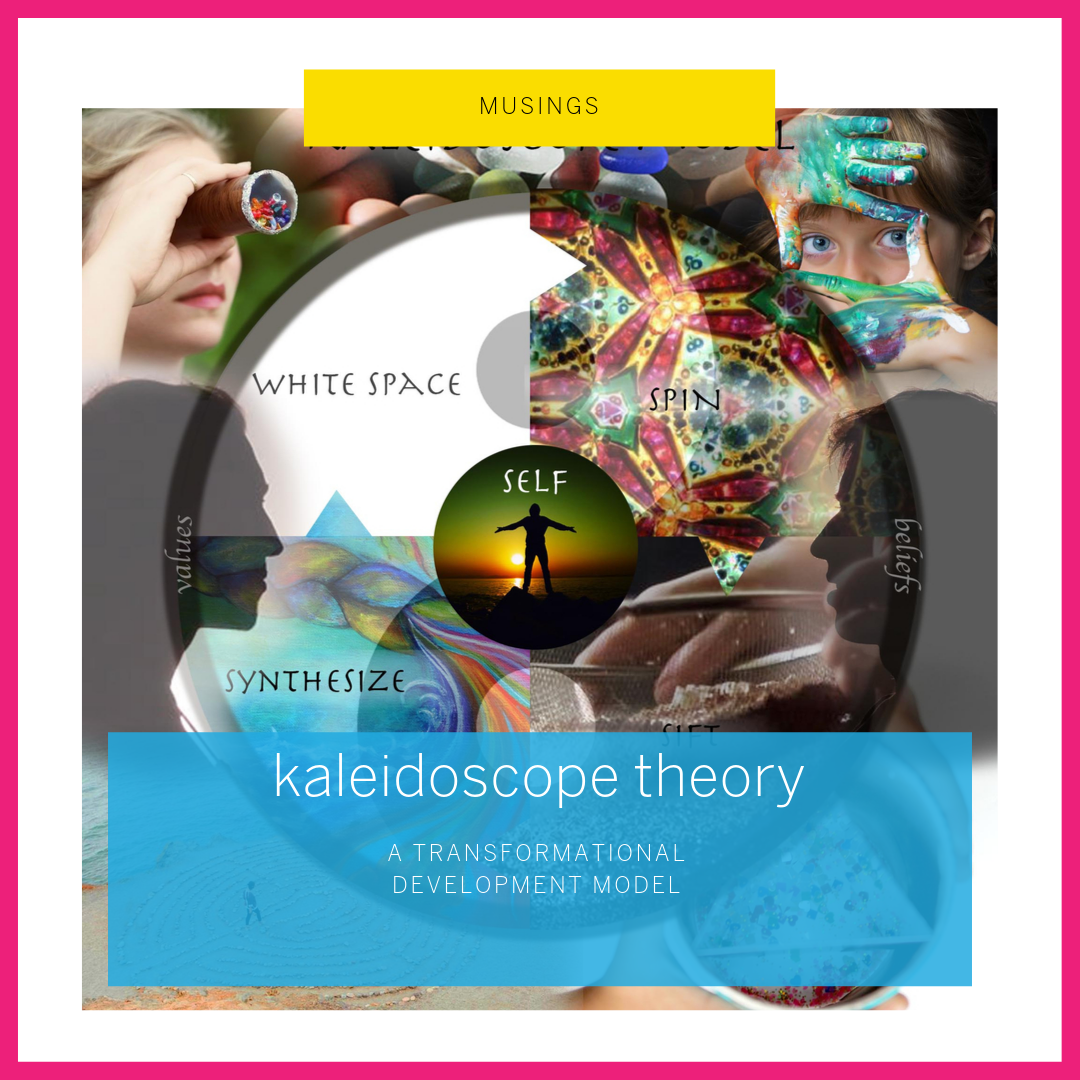what is kaleidoscope theory?
“Lucy in the sky with diamonds
Picture yourself in a boat on a river
With tangerine trees and marmalade skies.
Somebody calls you, you answer quite slowly,
A girl with kaleidoscope eyes.
”
It came to me in a dream. The colorful shaft of a word broke out of the sleepy darkness…
Kaleidoscope
The Greek word kaleidoscope has many definitions, such as the two found in Merriam-Webster’s (2019) online dictionary: “an instrument containing loose bits of colored material (such as glass or plastic) between two flat plates and two plane mirrors so placed that changes of position of the bits of material are reflected in an endless variety of patterns.” Kaleidoscope is also used to describe “a changing pattern or scene, a succession of changing phases or actions, and a diverse collection” (Merriam-Webster, 2019).. As a child I always loved kaleidoscopes. As a teen and now as as an adult still, I am still mesmerized by psychedelic and changing images.
Why had this word dawned on me as a message from my unconscious?
During my graduate-level class at Sofia University, Intuitive Inquiry into Creativity & Innovation, the question, of “‘How do we use creative processes in decision-making?”’ had sewn itself into my soul. This question was chosen by me for the purpose of making sense of my own swirling mind. The inquiry paper I wrote (Mensh, 2019), was an exercise in helping myself and others find transpersonal ways to manage the following: (a) the influx and array of ideas, (b) the chaos and anxiety of decision-making, (c) confusion over how to process information, and (d) how to combine creativity with coaching.
I lay in bed and held this instrument loosely in my mind. Just like a kaleidoscope, links, connections, and patterns began to shift and emerge. I developed and experimented with a process I termed kaleidoscope theory, a model of transformational development. As I developed my theory, Four distinct phases of the process clicked into place:
1.) White space – the blank page of a fresh start, clarity, beginning, or the unknown.
2.) Spin – a generative, swirling of ideas and shifting patterns of possibility.
3.) Sift – an organizational phase with the use of discernment to sift or sort through options, weighing their value.
4.) Synthesize – the product of the process of creation, bringing it all together in a form or resolution.
In this paper, I put kaleidoscope theory to the test in through several possible applications of how it can be brought in practice. We will examine each element of the theory, along with its individual phases, and then all elements are explored them in the context of creativity and coaching. This investigation will be extended to consider what the theory may look like through the lens of a day or a whole life. Within the examples of given case studies, the names have been changed.
This theory is for anyone (a) who has felt stuck or confused, (b) who is paralyzed with indecision, or (c) who wants to transmute chaotic energy and synthesize it into something meaningful. It may be used (a) by people in creative vocations, (b) between people interpersonally in the field of personal coaching, (c) by those struggling for clarity, and (d) by those who wish to make sense and smooth out the of the flow of daily life while harnessing its bits of wisdom.
Understanding the natural phases of the journey can ease the discomfort of the unknown. It is also interesting to note the phase in which phase you might experience the most resistance or difficulty, and experiment with what types of activities can help you move though them.
In fact, I have used my kaleidoscope theory to aid myself in the challenge of writing this paper. It all started with white space, or the blank page.


